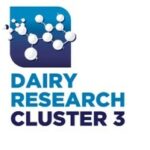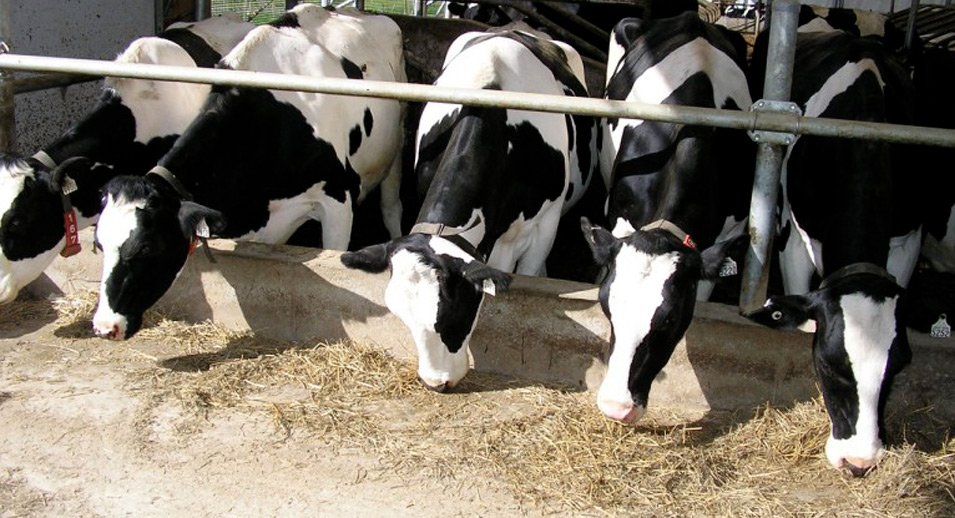Are some cows genetically susceptible to Johne’s Disease?
- April 19, 2021
A research project led by Nathalie Bissonnette (Agriculture and Agri-Food Canada (AAFC) -Sherbrooke) and Kapil Tahlan (Memorial University of Newfoundland) is investigating genetic markers in dairy animals that may be associated to Johne’s disease susceptibility or resistance. The project, Unraveling the genetic susceptibility to Johne’s disease, is financed by AAFC and Lactanet with in-kind contributions by Holstein Canada under the Dairy Research Cluster 3.
For dairy farmers, this disease results in financial losses related to reduced milk production, decreased pregnancy rates, increased premature culling, and impacts overall animal welfare. Economic losses in the Canadian dairy sector resulting from Johne’s disease were recently estimated at $21.5 million to $34.1 million.[1]
The main pathogen that causes Johne’s disease is Mycobacterium avium subspecies paratuberculosis (MAP). Management tools are currently in place to reduce the spread of Johne’s disease in Canada. For example, by implementing the Biosecurity module of proAction®, dairy farmers work with their veterinarians to mitigate the risks of introducing existing and emerging animal diseases on their farms to maintain the health of the herd. However, controlling Johne’s disease is difficult due to the disease’s unpredictable progression and the weak sensitivity of diagnostic tests.
Previous research has shown the potential to reduce the prevalence of Johne’s disease in cattle by selecting for animals that are genetically resistant to the disease. This innovative application would be a complementary to the tools farmers can use alongside management strategies to prevent infections.
Over a five-year period, Nathalie Bissonnette and her collaborators collected serum and fecal samples from 3,150 cows. The team used this data combined with other diagnostic tests to define a classification system and identify animals as either infected and infectious, infected and assumed resistant, or healthy. Using this unique dataset, they were able to accurately model the development of Johne’s disease over time and correctly differentiate between cows that would eventually develop Johne’s disease and those that resisted the infection and did not excrete the pathogen. The researchers are also genotyping cows using two proven genetic testing methods (i.e. single nucleotide polymorphisms (SNP) panel and genotyping-by-sequencing), and analyzing the epigenetic profile of susceptible cows. So far, the team has identified genetic and epigenetics markers associated with the susceptibility of developing Johne’s disease.
In recent publications, the researchers confirmed the presence of genetic modifications[2],[3] and the epigenetics effects[4],[5],[6] that are associated to Johne’s disease.
Analysis was performed to study the markers in vitro[7],[8] and studying immune tolerance to JD using bovine primary macrophages.[9] Further research on a second population of dairy cows is ongoing and will confirm the usefulness of the genetic markers for selection of JD resistance/tolerance.
The team is also investigating the genetic diversity of MAP strains by using validated tools[10] and classifying the variants from animals across Canada that are infected with Johne’s disease at different stages. These analyses will define which factors affect the performance of diagnostic tests and explain disease progression. This ongoing work to identify MAP variants that could be more virulent will be key for the development of a successful vaccination program in the future.
Project Overview
Principal Investigators: Nathalie Bissonnette (Agriculture and Agri-Food Canada (AAFC) – Sherbrooke) and Kapil Tahlan (Memorial University of Newfoundland)
Co-Investigators: Eveline Ibeagha-Awemu (AAFC-Sherbrooke), David Kelton, Flavio Schenkel (University of Guelph), Gilles Fecteau (Université de Montréal), Franck Biet (Institut national de la recherche agronomique – France)
Total Budget: $1,019,988
[1] Rasmussen P, Barkema HW, Mason S, Beaulieu E, Hall DC: Economic losses due to Johne’s disease (paratuberculosis) in dairy cattle. J Dairy Sci 2021. https://www.sciencedirect.com/science/article/pii/S0022030221000461
[2] Mallikarjunappa S, Schenkel FS, Brito LF, Bissonnette N, Miglior F, Chesnais J, Lohuis M, Meade KG, Karrow NA: Association of genetic polymorphisms related to Johne’s disease with estimated breeding values of Holstein sires for milk ELISA test scores. BMC Vet Res 2020,16(1):165. https://www.ncbi.nlm.nih.gov/pubmed/32460776
[3] Bissonnette N, Marete A, Kelton D, Schenkel F, Ibeagha-Awemu E, Fecteau G, Miglior F: Conditional GWAS using sequence-based genotypes for susceptibility to Mycobacterium avium subsp paratuberculosis infection in Canadian Holstein. J Anim Sci 2020, 98(4): https://doi.org/10.1093/jas/skaa278.032.
[4] Ibeagha-Awemu E, Bhattarai S, Dedemaine PL, Wang M, McKay SD, Zhao X, Bissonnette N: Genome wide DNA methylation analysis reveals role of DNA methylation in cow’s ileal response to Mycobacterium avium subsp. paratuberculosis. J Anim Sci 2020, 98: https://doi.org/10.1093/jas/skaa278.471.
[5] Ibeagha-Awemu E, Bhattarai S, Dudemaine PL, Wang M, McKay SD, Zhao X, Bissonnette N: DNA methylome wide profile associates differentially methylated loci and regions with cow’s ileal lymph node response to Mycobacterium avium subsp. paratuberculosis. Journal of Animal Science 2020, 98(4): https://doi.org/10.1093/jas/skaa278.071.
[6] Marete A, Ariel O, Ibeagha-Awemu E, Bissonnette N: Identification of long non-coding RNA associated with bovine Johne’s disease using a combination of neural networks and logistic regression. Frontiers in veterinary science 2021, https://www.frontiersin.org/articles/10.3389/fvets.2021.639053/abstract.
[7] Mallikarjunappa S, Shandilya UK, Sharma A, Lamers K, Bissonnette N, Karrow NA, Meade KG: Functional analysis of bovine interleukin-10 receptor alpha in response to Mycobacterium avium subsp. paratuberculosis lysate using CRISPR/Cas9. BMC Genet 2020, 21(1):121. https://www.ncbi.nlm.nih.gov/pubmed/33138773
[8] Ariel O, Brouard JS, Marete A, Miglior F, Ibeagha-Awemu E, Bissonnette N: Genome-wide association analysis identified both RNA-seq and DNA variants associated to paratuberculosis in Canadian Holstein cattle ‘in vitro’ experimentally infected macrophages. BMC Genomics 2021, 22(1):162. https://www.ncbi.nlm.nih.gov/pubmed/33678157
[9] Ariel O, Gendron D, Dudemaine PL, Gevry N, Ibeagha-Awemu EM, Bissonnette N: Transcriptome Profiling of Bovine Macrophages Infected by Mycobacterium avium spp. paratuberculosis Depicts Foam Cell and Innate Immune Tolerance Phenotypes. Front Immunol 2019, 10:2874. https://www.ncbi.nlm.nih.gov/pubmed/31969876
[10] Byrne AS, Goudreau A, Bissonnette N, Shamputa IC, Tahlan K: Methods for Detecting Mycobacterial Mixed Strain Infections-A Systematic Review. Front Genet 2020, 11:600692. https://www.ncbi.nlm.nih.gov/pubmed/33408740









